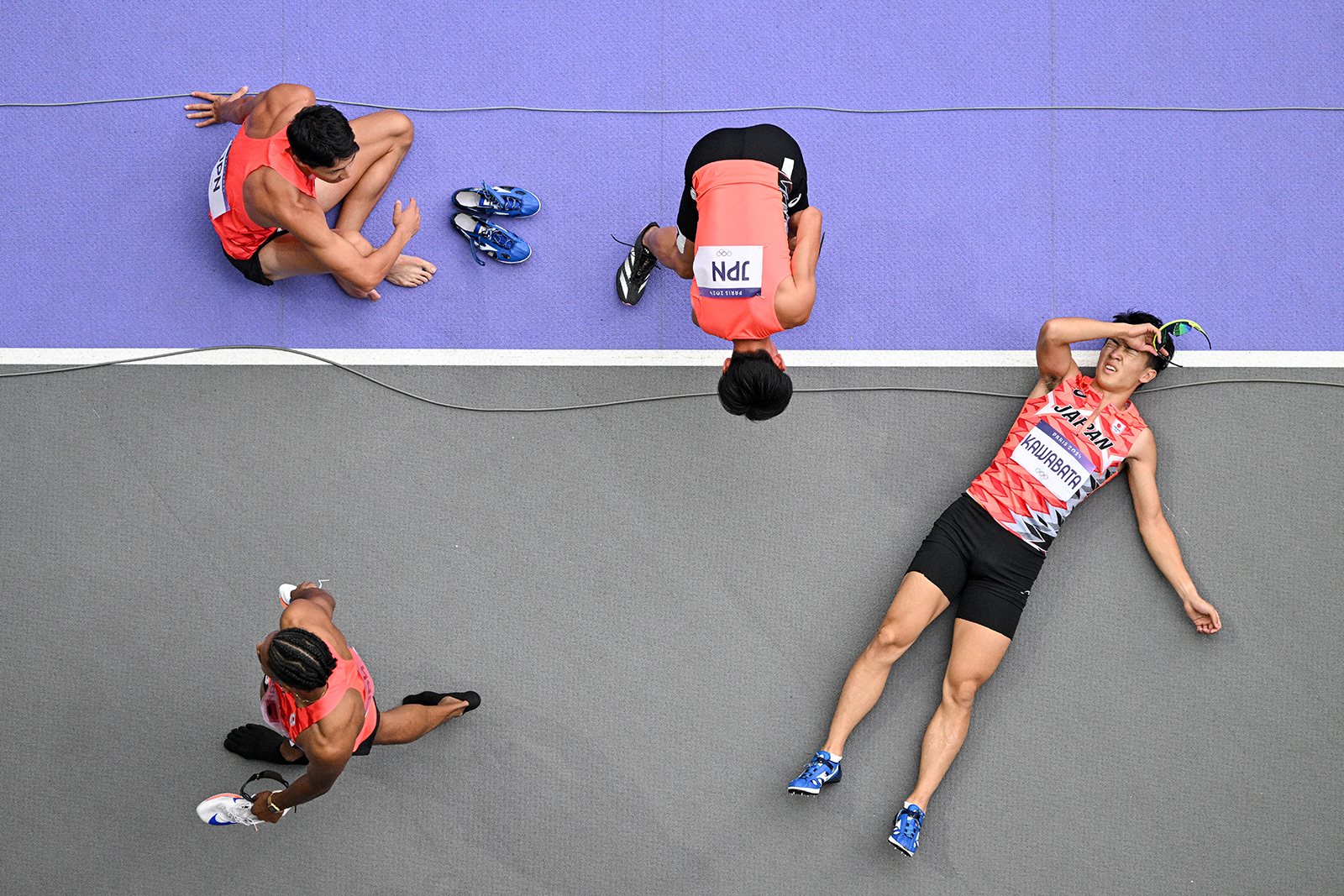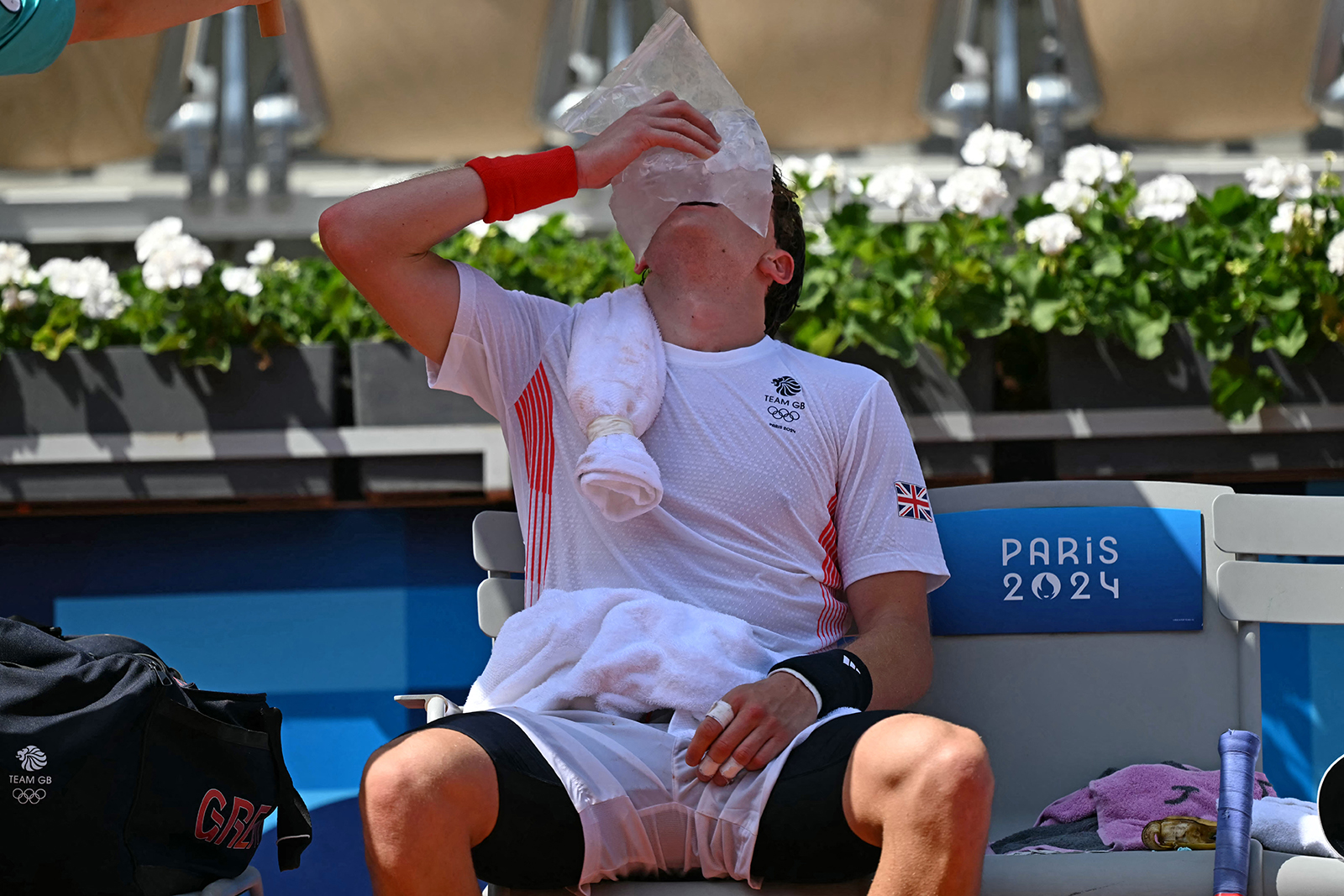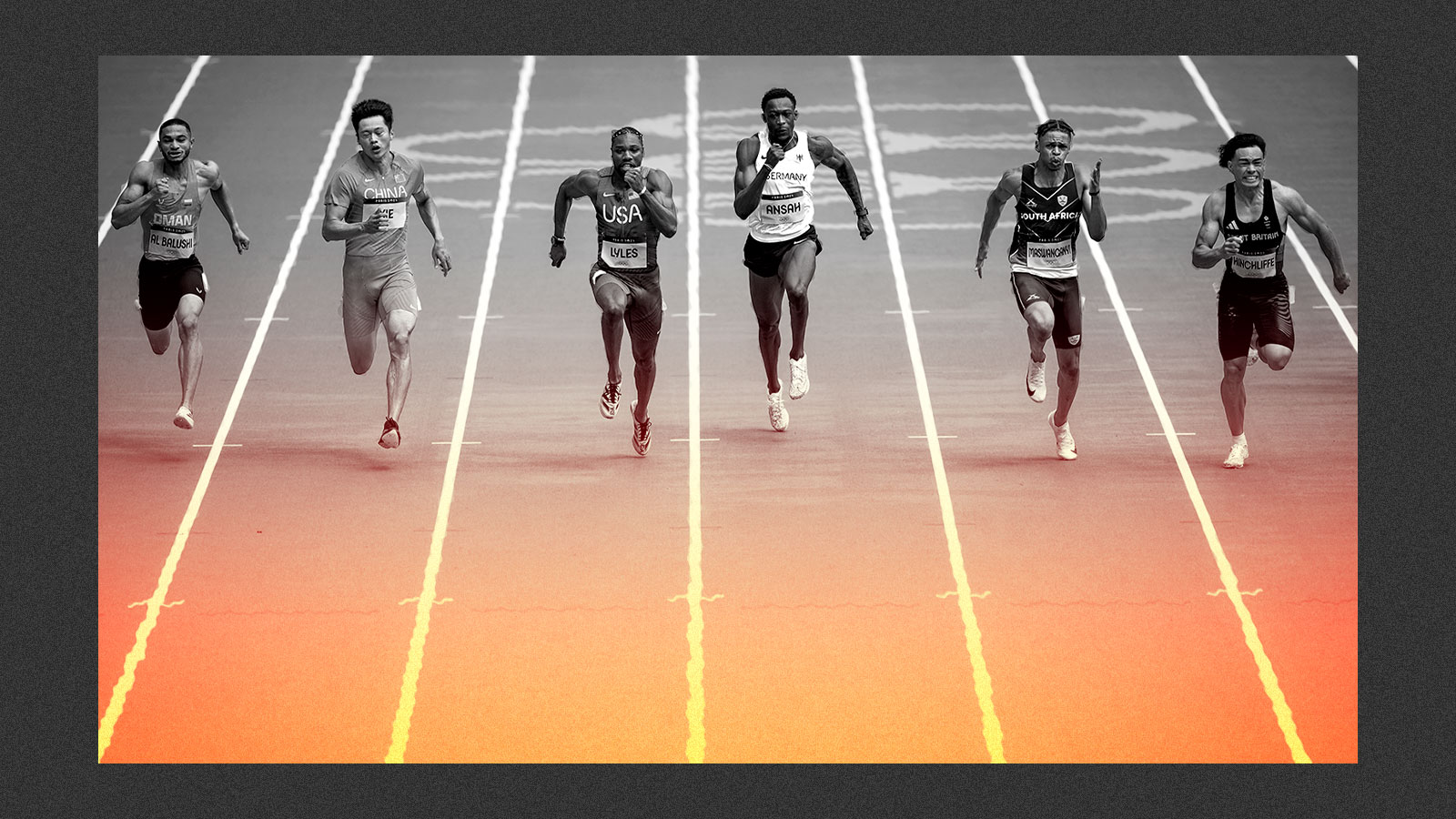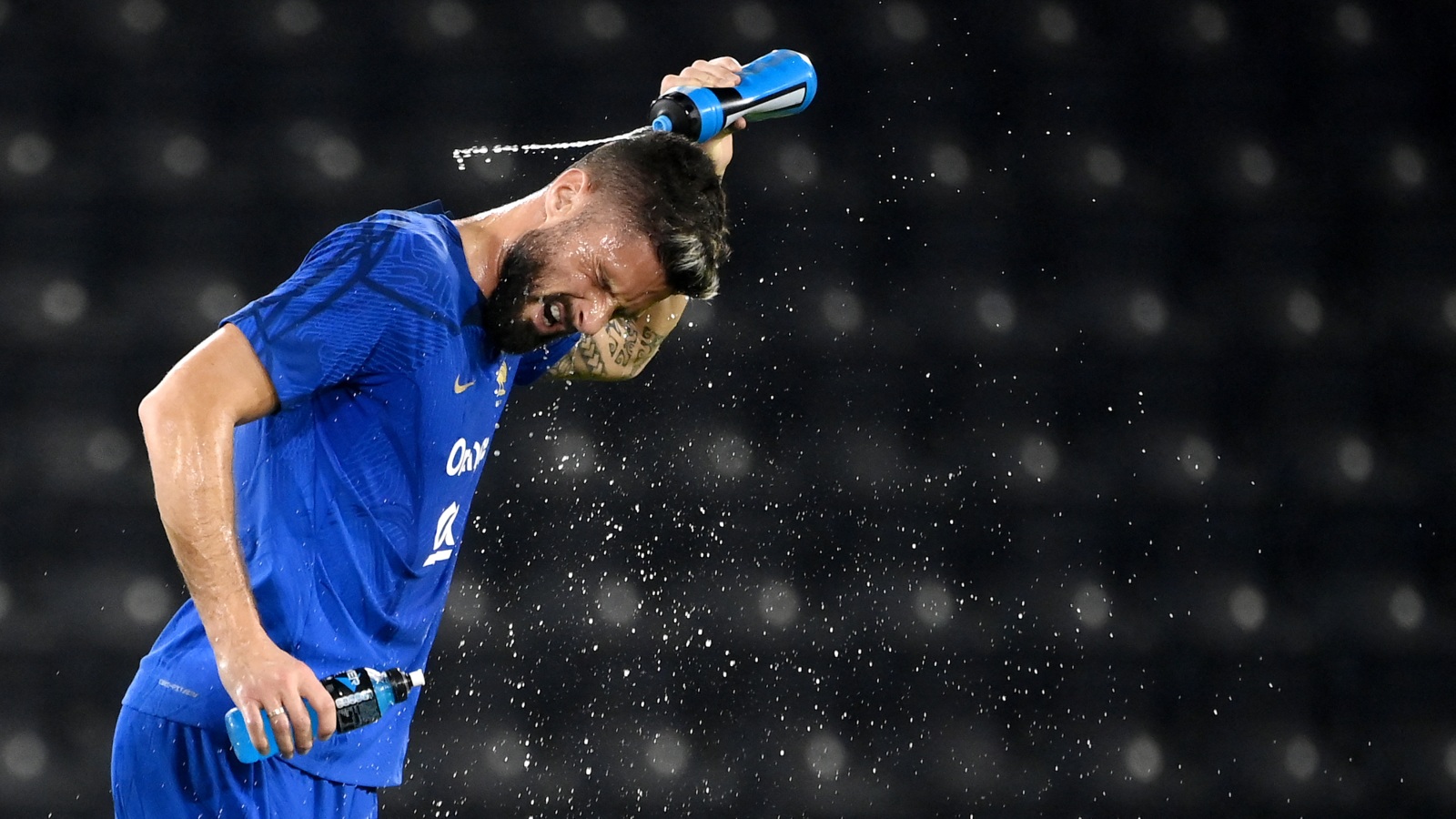Curled up on a small, white rectangle of fabric on the grass by a park bench in Paris, Italian swimmer Thomas Ceccon inadvertently took the internet by storm simply by sleeping outside. The moment, posted to social media on Monday by a fellow Olympic athlete, came a week after Ceccon failed to qualify for the men’s 200-meter backstroke finals, despite having just won gold in the 100-meter event.
In an interview with an Italian broadcaster, Ceccon blamed his performance gap on subpar sleeping conditions in the Olympic Village — namely, heat. This week, media speculation that the uncomfortable temperatures were also behind his alfresco nap stirred an already roiling pot of concerns around the impact of extreme weather on this year’s summer games. (The Italian Swimming Federation denied that Ceccon’s nap was related to conditions in the Olympic village.)
In the weeks leading up to the Paris Olympics, weather forecasters and athletes alike feared that the games could become the hottest on record, surpassing the 2021 Tokyo events, where high humidity and 90-degree-Fahrenheit days led 100 athletes to seek medical attention for heat illnesses; even more nonathletes followed suit. Although it’s too soon to know how this year’s games will stack up, a punishing heat dome settled over Paris on July 29, lasting for four days and spiking temperatures to highs of 97 degrees F as the first week of the games were underway.
During the scorching weather, national teams rushed to keep their athletes in tip-top shape, renting air conditioners for their bedrooms in the Olympic Village and offering them ice vests. The Australian Olympic Committee even invested in state-of-the-art monitors to record on-the-ground temperature, radiation, humidity, and wind speed, resulting in personalized recommendations to help their athletes manage heat risks. For some outdoor sports, like tennis and soccer, new protocols for additional rest breaks were triggered as temperatures surpassed predetermined safety thresholds.

Antonin Thuillier / AFP via Getty Images
Climate change is driving up the frequency of extreme and deadly heat waves. Rings of Fire II, a report on Olympic heat released before this year’s games began on July 26, found that average summer temperatures in Paris have warmed by 3.1 degrees Celsius, or about 5.6 degrees F, since 1924, the last time the City of Light hosted the games.
“Yesterday, climate change crashed the Olympics,” said climatologist Friederike Otto of World Weather Attribution, an academic project that studies climate change impacts on meteorology, on July 31. “If the atmosphere wasn’t overloaded with emissions from burning fossil fuel, Paris would have been about 3 degrees C cooler and much safer for sport.”
Just a few degrees can make a big difference for athletes. In warm temperatures, the body is less able to shed the heat it generates, which can impact performance and health: A 2023 study of marathon and racewalking athletes found that a 2.7 degrees F increase in core body temperature could result in up to 20 percent slower performance times. And as the body tries to cool down, it sweats and dilates blood vessels. When these mechanisms are pushed too hard, they lead to dangerous health risks — such as dehydration, organ failure, and heart attacks. And the longer a heat wave drags on, the more deadly the impacts become.
Extreme heat affects a wide range of sports. The Rings of Fire report, a collaboration between the British Association for Sustainable Sport and the Australian climate advocacy group Frontrunners, documented stories from elite athletes across 15 sports on how extreme temperatures had impacted their careers and health. In the report, British swimmer Hector Pardoe said he was “practically paralytic” after a heat stroke that left him vomiting and motionless during a competition in Budapest. For Yusuke Suzuki, a Japanese racewalker, heatstroke was a torturous ordeal that took two years to recover from.
“Going forward, I don’t see this being any less of a problem,” said Mike Tipton, a human physiology researcher at the University of Portsmouth in the U.K. who contributed to the report. While Tipton is encouraged by the changes he sees taking place across sports to protect athletes and fans from extreme heat — such as water breaks and cooling stations — he also cautions against losing sight of the importance of mitigating the direct cause of climate change: humans burning fossil fuels.
The organizers of the Paris Olympics would seem to agree. In the years leading up to the games, the committee made unprecedented sustainability promises like slashing the greenhouse gas emissions of recent Olympics in half. But, along with a 60 percent plant-based menu, the decision to cut energy use by building Olympic Village dorms with geothermal cooling, rather than air conditioning, has become a main source of athletes’ complaints about the accommodations. Bernadette Szocs, a Romanian table tennis player, told The Guardian that the fans offered in dorm rooms weren’t enough. “You can feel it is too hot in the room,” she said.
“I have a lot of respect for the comfort of athletes, but I think a lot more about the survival of humanity,” Paris Mayor Anne Hidalgo told a French radio station in 2023 about the decision to eschew air-conditioning. But as temperature projections and concerns climbed, eventually, the organizers caved and ordered 2,500 air-conditioning units for teams willing to pay for them. Some, like the Korean swim team, have opted to stay in hotels. Unequal access to such comforts have raised concerns of two-tier games.

Martin Bernetti / AFP via Getty
Experts agree that air-conditioning can create a competitive advantage. “Being able to cool down at night is a significant part of managing heat risk,” said Richard Franklin, a professor of public health and tropical medicine at James Cook University, in Queensland, Australia. Franklin added that heat waves often come with higher nighttime temperatures that prevent the body from fully recovering, and that lack of sleep and the physical strain of competition can increase risks.
There are other ways that athletes can mitigate the dangers of competing in high temperatures.
“The best thing you can do is prepare ahead of the games by acclimatizing your body to the conditions,” said Madeleine Orr, an assistant professor of sport ecology at the University of Toronto and author of a book on how global warming is changing sports. She says that each sport comes with unique risk factors, such as time spent on exposed pavement, or duration of play. But for any athlete to properly sync their body before competition, she says, exercising in the heat is crucial. “It doesn’t eliminate risk, but it pushes the boundaries of when they feel the impacts. It makes a big, big difference.”
Hannah Mason, a public health lecturer at James Cook University and lead author of a 2024 paper analyzing the impacts of extreme heat on mass sporting events, said that other factors — including the availability of shade and existing health conditions — should be considered in athletes’ heat preparedness plans. For example, Paralympic athletes often use equipment, like wheelchairs, that can trap more heat.
Tipton, Orr, and Mason all agreed that, eventually, the escalating dangers of climate change will leave Olympics organizers with no option but to change the timing of summer games to happen during months with cooler weather. The good news, Tipton says, is that teams and athletic federations have started taking the risk of heat more seriously. “We’re seeing the nature of sports change in terms of the rules, regulations, and permissible cooling strategies,” he said.
According to Mason, more top-down rulemaking on safety limits will be crucial for managing risk. With the high stakes and pressure of competition, she says athletes are often unwilling to back out even when conditions become dangerously hot.
“If it’s a few degrees too hot, they’re not going to back out,” she said. “We need policies to fall back on so that we don’t put these decisions in the hands of athletes that have spent their whole life training for that event.”


